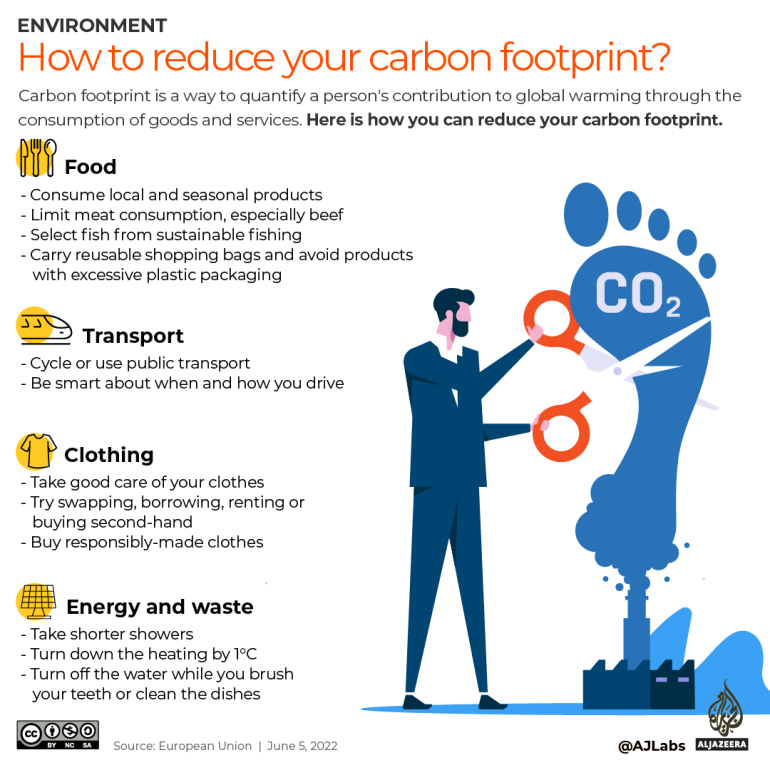The climate crisis has become the front-line issue in the world today with millions at risk due to erratic climate patterns and natural disasters.
People across the globe observe June 5 as World Environment Day. Led by the United Nations, it is the largest global platform for environmental awareness and outreach.
This year, the annual conference is being hosted by Sweden with the “Only One Earth” campaign slogan, and a focus on “Living sustainably in harmony with nature”.
Read on for some key facts and statistics about the environment in five infographics and maps.
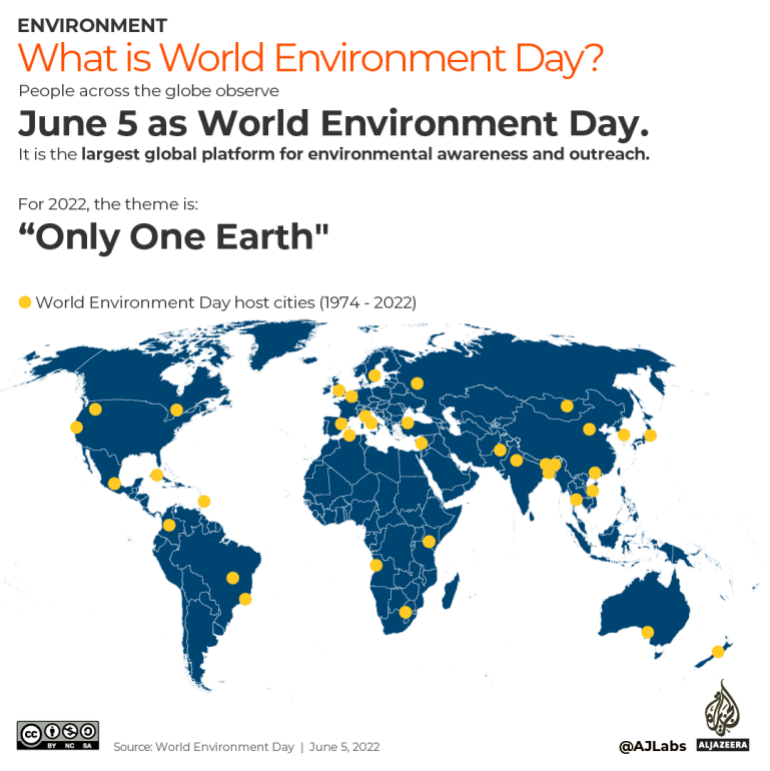
The most polluted countries in the world
About seven million premature deaths happen every year due to air pollution, or one in nine of all deaths. Nine out of 10 people breathe unclean air, making it the most significant environmental health risk of our time.
In 2021, India had 63 of the world’s 100 most polluted cities, followed by China (12), Pakistan (6), Kazakhstan (4) and Bangladesh (2), according to air quality tracker IQAir. All these cities had a PM2.5 air-quality rating of more than 50 – a value that exceeds the World Health Organization (WHO) guidelines by more than 10 times.
Bhiwadi, in India, had the worst average air quality in 2021, at 106.2.
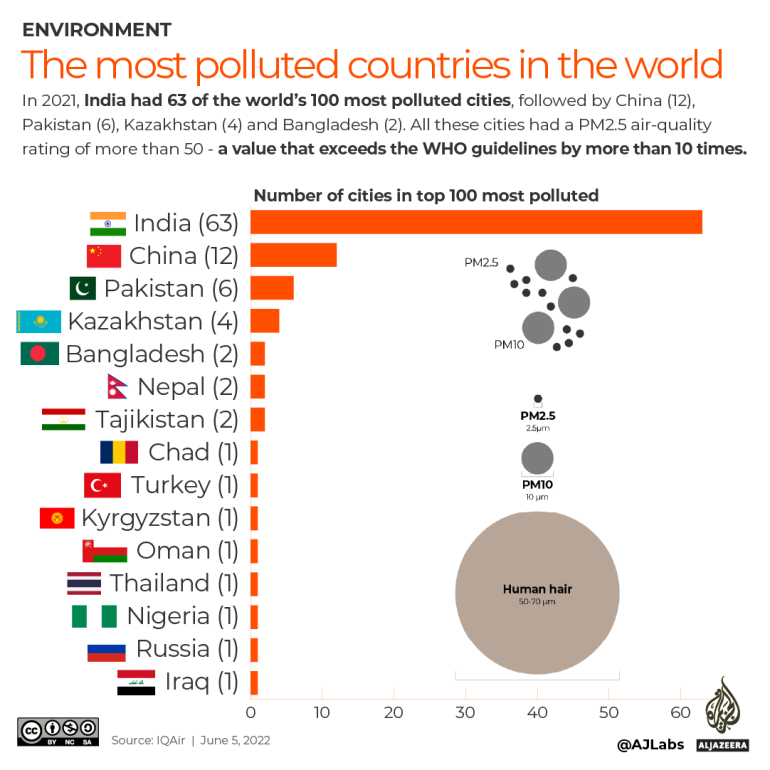
Which countries have the safest drinking water?
In 2020, about three-quarters (74 percent) of the world’s population had access to clean drinking water. One in four people do not have access to a safely managed water source. In low-income countries, unsafe water accounts for six out of every 100 deaths.
In the least developed countries, 22 percent of healthcare facilities have no water service, 21 percent have no sanitation service, and 22 percent have no waste management service. Most are in sub-Saharan Africa.
Ten countries – eight in Africa and two in Asia – have less than a 20 percent share of the population with access to safely managed drinking water. The lowest in share percentages are Chad (5.6 percent), the Central African Republic (6.2 percent), Sierra Leone (10.6 percent), Rwanda (12.1 percent) and Ethiopia (12.6 percent).
The countries with 100 percent access to safe drinking water include Greece, Iceland, Kuwait, Lichtenstein, Malta, Monaco, New Zealand, San Marino and Singapore.
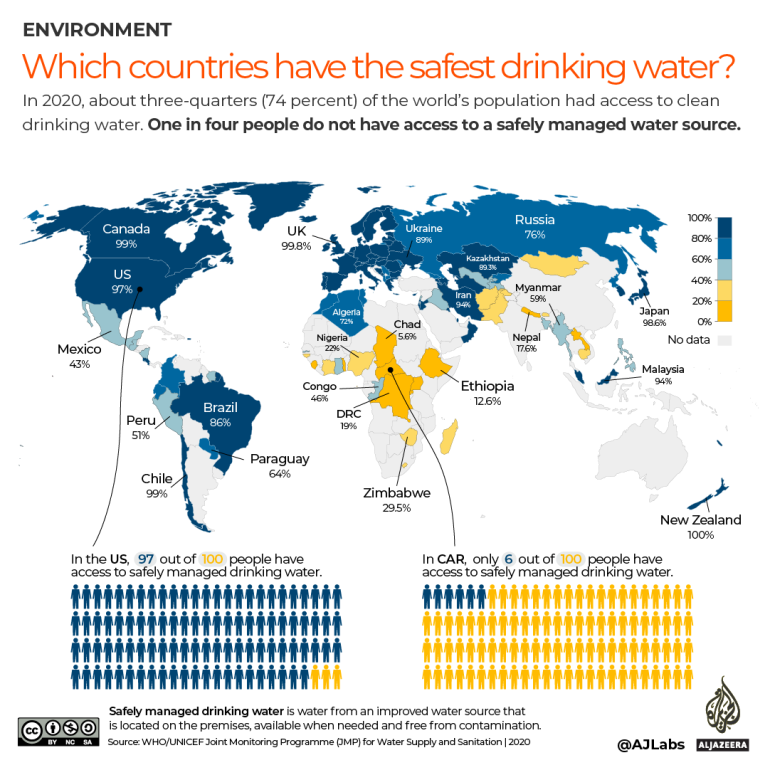
Net zero emissions targets
According to the UN, global net human-caused emissions of carbon dioxide (CO2) would need to fall by about 45 percent from 2010 levels by 2030, reaching “net zero” by 2050. This means that any remaining emissions would need to be balanced by removing CO2 from the air.
On December 12, 2016, 196 countries adopted the Paris Climate Agreement, a legally binding international treaty on climate change that came into effect on November 4, 2016. The aim of the treaty is to limit global warming to well below 2 degrees Celsius (3.6 degrees Fahrenheit), preferably to 1.5C (2.7F).
China, the United States, and the European Union – the biggest polluters in the world – have set a net zero target, covering about 76 percent of global emissions (PDF).
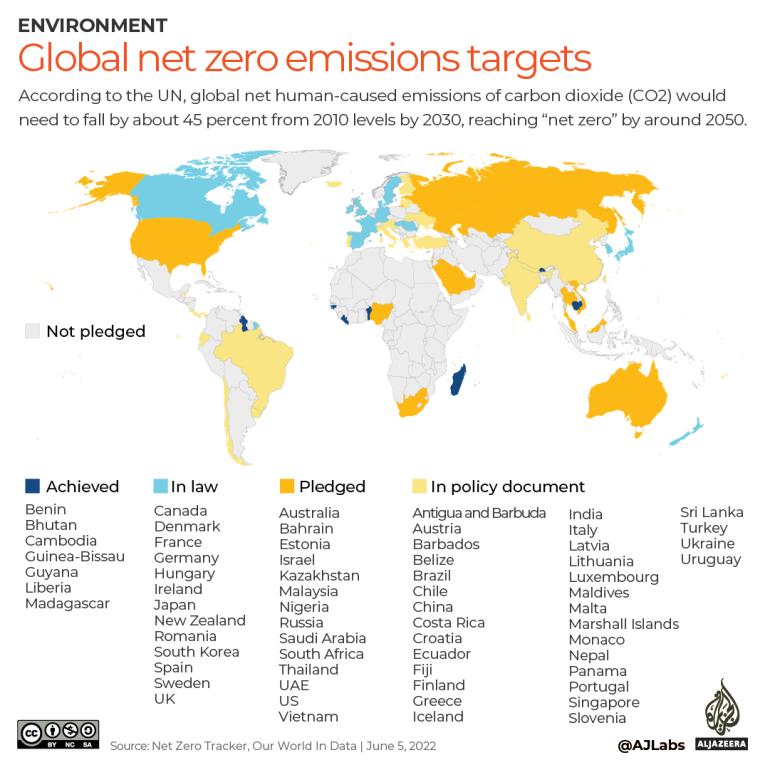
How can you reduce your carbon footprint?
Carbon footprint is a way to quantify a person’s contribution to global warming through the consumption of goods and services. Making environmentally responsible choices in everyday life can contribute to the fight against climate change.
Here are a few ways you can reduce your carbon footprint.
